
Are you facing the challenge of writing a project grant proposal or filling out an application for funding? If you are, then you’ll need to know how to navigate a terminology minefield.
Are you focusing on delivering ‘outputs’ or ‘outcomes’? Is your work driven by your ‘mission’ or your ‘vision’? Should you be setting ‘goals’ or ‘objectives’? Or both?
These are just some of the terms routinely used by every type of institutional donor, ranging from large-scale multilaterals down to small private family foundations.
It can be pretty bewildering at times, especially if you’re new to the field. And it will help for you to have a firm handle on what means what before you start writing anything.
So, here we’ll run through the key concepts, from the broadest, overarching ideas down to the more granular, nuts-and-bolts terms.
We’ll cover:
- Vision and mission
- Goal (or aim)
- Objectives
- Outcomes
- Indicators
- Outputs
- Milestones and deliverables
Let’s kick off with two of the broadest ideas of them all: your vision and your mission.
Vision and mission
If you operate in the charity or non-profit world, you’ll be familiar with organisations talking about their vision and their mission together. And that’s because it’s recommended practice to include both of these up front in organisational publications such as annual reviews and trustee reports.
There is an important difference between the two. An organisation’s vision statement should define the ideal future that it’s working towards with others. Note those last two words: ‘with others’. There is an important point about contribution here.
Your vision is your Martin Luther King Jr dream. Your organisation might, for instance, be working towards ‘a world in which all children have access to free health care’ or ‘an end to street homelessness’.
But, if we do ever arrive at that point, your organisation won’t have single-handedly made that vision a reality. Instead, it will have contributed towards that better world along with (probably many) other like-minded organisations.
Your organisation’s mission, on the other hand, is something that you can own exclusively.
Your mission statement should explain, as clearly and concisely as possible, how your organisation will go about making your particular contribution to that overall vision. It should spell out why your organisation exists, the niche that it inhabits and how it goes about its business. It is your organisation’s singular purpose. (And, indeed, some non-profits will talk about their purpose rather than their mission – these are two terms that can be used interchangeably.)
It’s helpful to look at how the RSPCA defines its vision and its mission to see the distinction. Its vision is of:
‘… a world where all animals are respected and treated with kindness and compassion’.
Its mission is:
‘… to ensure animals have a good life by rescuing and caring for those in need, by advocating on behalf of all animals and by inspiring everyone to treat them with compassion and respect’.
It’s useful to notice that the organisation can only contribute to all animals being treated with kindness and compassion. But it can legitimately claim to advocate on behalf of all animals.
Now, if you’re writing a funding proposal for a discrete project, rather than seeking financial support for your whole organisation, you’ll generally only refer to your vision and mission briefly in an introductory paragraph about your organisation.
You may also have an overall vision for the project itself, but don’t be tempted to use that word in relation to your project in the proposal. It may confuse the donor. Instead, the highest-level framing of your project should set out its goal or aim.
Goal (or aim)
Your project’s goal or aim is essentially the ultimate, overall intention for the work being proposed. This could look something like this: ‘to create sustainable futures for prioritised rural communities in South East Ghana’.
The first thing to notice here is how I’m talking about your goal or aim. And I do that because this is another pair of terms that people switch around pretty freely. Different funders have different preferences with their terminology. Some will prefer the word ‘goal’ and some will use ‘aim’. As a humble seeker of funding, you just have to go along with what each donor prefers.
Of course, if you’re completing a funding application form, you’ll know right away which of these terms is in play, and it’s essential you settle in with the funder’s terminology throughout the form.
On the other hand, if you’re creating your own structure for a free-form proposal or letter of enquiry, then it’s up to you. Both words mean the same thing, so you can make your own choice between the two.
But once you’ve picked one, stick to it and don’t be tempted to switch between the two in the same document. (Personally, as a football fan, I’m always happier thinking about ‘goals’ rather than ‘aims’.)
Note that when it comes to requesting funding for projects, we really should be writing about the project’s goal rather than goals. Your project should be working towards only one overall goal. If you reference more than one, it’s likely that the reviewer will interpret that as a lack of clarity and mark your proposal down accordingly. There may be many component parts to your project, but it’s essential that they’re all pointed towards the same, singular goal (or aim!).
Objectives
Next in our hierarchy of terms we come to objectives. All of the terms we’re looking at here are important, but none more so than your objectives. These are the primary stepping stones on your way to your project’s overall goal and should clarify exactly how you intend to reach that goal.
The good news is that you can have more than one objective. However, while it would be nice to think that you can have as many as you like, beware. Again, the funder reading your proposal will frown on too many, seeing it as an indication of confused project design.
You might reasonably only have one or two objectives, depending on the scale of the project. But certainly try to avoid having any more than three or, at a push, four. Funding application forms will most often limit you to three.
Writing your objectives
More helpful news is that, many years ago, some clever person created an approach to setting objectives that is now widely recognised as best practice. Whoever that person was, they decreed that objectives should be ‘SMART’. And even if a funding organisation doesn’t explicitly refer to this in its guidelines, you can safely assume that your reader will welcome the clarity that SMART objectives bring to the game.
The SMART acronym works as follows:
- ‘S’ = ‘specific’
- ‘M’ = ‘measurable’
- ‘A’ = ‘achievable’
- ‘R’ = ‘relevant’
- ‘T’ = ‘timely’ or ‘time-bound’.
Some of these are easier to work with than others, as we shall see.
Specific: What makes an objective specific? Essentially, the answer to this is a lack of vagueness! So, as far as possible, you should try to specify who will be involved, and where it will happen.
Ask yourself: ‘Can I include numbers?’ and ‘Are there any other important details missing?’
Measurable: Measurability is essential. If a funder can’t see from your wording how you will be able to measure progress then they’re going to look elsewhere pretty quickly. In some cases, an objective might just not lend itself to numerical measurement. In that case, you might include something qualitative which will be measured through anecdotal surveys.
Ask yourself: ‘How much?’ or ‘How many?’ Or at least, ‘To what extent?’
Achievable: There is a sweet spot to be aiming for with each objective. If your level of ambition is too modest, the funder will be unimpressed. But, equally, if an objective sounds too much like launching a certain number of flying pigs, then the funder won’t think you or your proposal credible.
Ask yourself: ‘Can we really get there?’
Relevant: This one’s easy! You need to make sure that the way you word an objective clearly shows how it will help you move towards the all-important goal of the project. If the goal is all about apples, don’t talk about pears in your objective.
Ask yourself: ‘Do all my objectives relate directly to the project goal?’ and ‘Are they all equally relevant?’
Time-bound: This one is easy to understand but often the hardest one to pull off. If this is a brand-new project, you may be very unsure how long it will take. But you need to be confident and set your timeframes clearly. It’s quite likely your intention will be to achieve all your objectives simultaneously at the end of the project, but this isn’t an absolute requirement.
Ask yourself: ‘Do I have all the information I need to set an accurate timeline?’
So, a SMART objective could read something like this: ‘To provide solar panels for 1,500 prioritised rural communities in the target location over the first six months of next year’.
Outcomes
Outcomes measure success. They act as illustrations of progress against your project’s objectives and, in turn, your goal. You may have a number of objectives and, similarly, it’s likely that you’ll be anticipating several outcomes.
Each objective may relate exclusively to one or more of the outcomes, but that’s not essential. In other words, you could have, say, three objectives and four anticipated outcomes which sit alongside them, with no particular grouping.
Essentially, outcomes are all about improved situations resulting from the work you’re proposing. Imagine your project has successfully concluded and you have used your funder’s money to achieve your goal. Once you arrive at that point, there’ll be a number of key changes that an observer will be able to see as evidence of success.
Writing your outcomes
The language you use for your outcomes needs to include words that convey change. An outcome might paint a picture of simple, positive change. For example, your project might mean that your beneficiaries or participants have better access to a particular service or facility. Or they might have a clearer understanding of an issue or more confidence in addressing a problem.
But, equally, it might be easier to frame the outcome in terms of a reduction in negative circumstances. For instance, you might want to talk about participants experiencing reduced levels of harm. Whichever way you go about it, change is the key.
Outcomes should also nearly always involve people. This is because funders are keen to know that their support will improve people’s lives. A building being built is not a compelling outcome. Funders will prefer to see an outcome that talks about people’s lives being improved by the existence of a new building.
There is one exception to this rule, which specifically relates to environmental projects. Most societies thankfully now agree that environmental gains have their own inherent value. This means that an increase in healthy species habitats or an improvement in welfare conditions for certain farm animals can qualify as compelling outcomes, whether or not there’s any related human benefit.
Of course, you could also include some related people-centred outcomes: for instance, one of those first outcomes could in turn help to improve someone’s livelihood.
Whenever possible, you should also try to include numbers when framing your outcomes. This will always help to make them feel more tangible and concrete. So, ‘participants experience a 40% increase in welfare payments’ will do a far better job than the same outcome without the percentage.
Indicators
You may want, or be required, to include some indicators alongside each outcome. These are your units of measurement that will indicate the degree to which an outcome has been achieved.
Let’s imagine you anticipate an outcome of a community experiencing a 50% reduction in antisocial behaviour.
Your prospective donor may think this sounds highly attractive. But they still won’t find your proposal compelling if you can’t describe exactly what will provide the evidence of this improvement.
This could be a downturn in the number of incidents reported to the local police. It could also be a higher proportion of positive reports derived from door-to-door questionnaires.
The actual process for assessing indicators is sometimes called the ‘means of verification’.
Outputs
It’s important not to confuse outcomes with outputs. And it’s easily done!
Try to think of ‘outputs’ as things that the machinery of your project will ‘put out’, produce or deliver. What these outputs are will depend (of course) on the nature of your project, and any given project might deliver a range of diverse outputs.
These could include physical products, like water pumps. They could include events and workshops, or media products like videos or publications. And, if the project involves an element of research, your outputs are likely to include research reports.
As with everything that a funding proposal should promise, you should try to specify how many of each product you’ll be delivering and by when.
Milestones and deliverables
As you’ll have noticed by now, there are a lot of different terms in use with much potential for confusion. So, I’ll wrap up by mentioning a couple more that fall into this category: milestones and deliverables. These two can be ambiguous (and you can usually get by without using them), but it’s helpful to understand what other people mean by them.
It’s useful to think of the original meaning of ‘milestones’. In the days of highwaymen and horse-drawn carriages, these were the small stone signs on the side of the road, telling you how much further it is to a particular place.
Project milestones do the same thing. They most often appear in timeline graphics representing key stages in the lifecycle of a project. It’s a catch-all term, as milestones can come in the form of events, meetings, report publications or just dates when one phase ends and another begins.
You may also have come across the term ‘deliverable’, which can be confusing. That’s because people tend to use the word ‘deliverable’ for a range of things, effectively anything that a project could deliver.
This might be a type of output or it could be an outcome. It’s essentially a non-specific – and therefore slightly unhelpful – term and I would recommend avoiding it as far as possible. That is, of course, unless the funder is specifically asking you to talk about your project’s deliverables.
Final thoughts
I hope you’ve found this tour of the terminology minefield useful. Hopefully, next time you have to work through a grant proposal or a funding application form, you’ll feel well-equipped to get those key elements in the right shape.
However, be aware there is no definitive map for this minefield. These aren’t scientific terms, after all. You may well find that different people use some of these terms in slightly different ways. It’s quite common to conflate goals and objectives, for example.
But remember: the funder is always right! So, if you notice they are providing guidance that is slightly at odds with your understanding, it always makes sense to comply with what they’re asking you to do.
Good luck, and may you nail that next proposal.
Do you or your team need more help planning or writing your grant proposals? Our bespoke grant proposal writing training and consultancy could be the extra support you need. Get in touch with the team for a chat about how we can help.
Image credit: Daniel Jenny / Shutterstock





